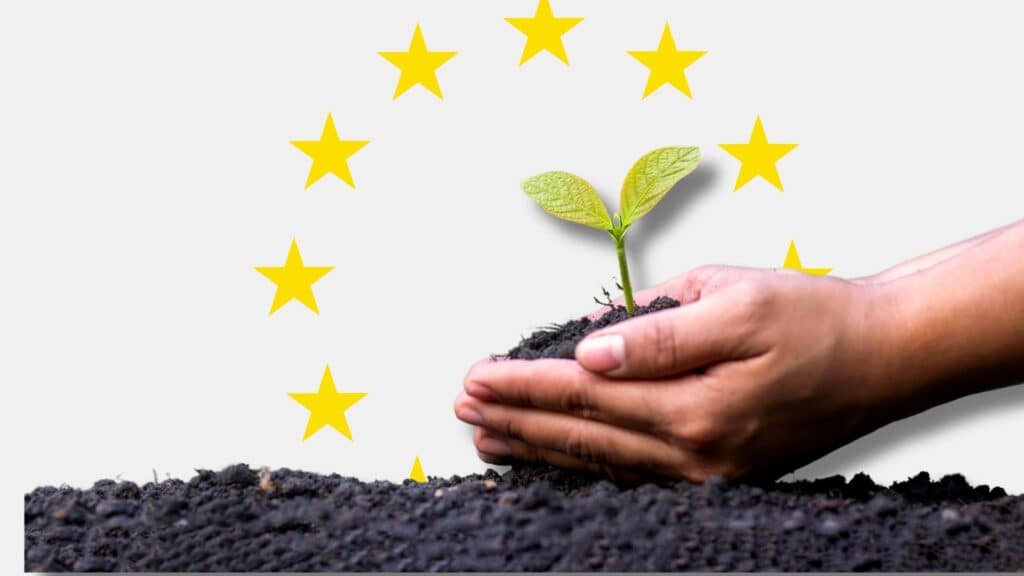
18/12/2024
A New Agenda for Europe: Priorities, Challenges and Goals for the New EU Term
June 2024’s European elections foreshadowed several profound changes in the institutional frameworks and political dynamics of the European Union. As outlined by Ursula von der Leyen in her 27 November address to the European Parliament, competitiveness, security, productivity, and the green transition will serve as strategic pillars to guide the next EU legislative agenda. However, turning this vision into reality will require the Union to overcome internal divisions and make bold decisions. Failure to do so, as Mario Draghi warned, risks plunging the EU into a “slow decline.”
Competitiveness and the Green Transition: The Heart of the EU Agenda
At the heart of the new Commission’s mandate will be substantial efforts to overhaul and enhance the competitiveness of Europe’s industrial framework. The recent Draghi Report put forth many solutions and specific actionable measures to close the gap with the United States and China. Draghi’s suggestions include ideas such as facilitating the decarbonization of industrial processes through investment and lower energy costs while protecting European companies from unfair competition and external shocks.
However, the Parliament remains divided on how to make the EU more competitive. Right-wing parties emphasise cutting bureaucracy and adopting realistic environmental policies, while left-wing groups advocates for maintaining strong social protections and ambitious sustainability investments. The next long-term EU budget (Multi-annual Financial Framework 2028 – 2034), strained by the need for increased spending to fund new priorities, is poised to become a battleground between political groups and Member States. One area of potential consensus could be advancing the integration of the single market, especially in capital markets, drawing on the recommendations from the Letta Report.
Common Defence and Economic Security
The new EU leadership begins its term in a global context marked by geopolitical conflict knocking on Europe’s doorstep and the looming return of the Trump Administration in the United States. Said circumstances are thrusting issues of building out a European common defence plan, future of trade, and strategic autonomy to the forefront of the new Commission’s list of priorities.
Faced with the threat posed by President Vladamir Putin’s Russia and uncertainty about American military and financial support under the Trump Administration, the creation of a European defence capacity is becoming increasingly urgent. The new (and first) Commissioner for Defence, Lithuania’s Andrius Kubilius, will be tasked with increasing defence spending, allocating EU budget funds, improving coordination among member states, and strengthening military industrial capabilities in Europe.
Moreover, the EU must address potential protectionist policies from a Trump-led U.S. On the one hand, the Union has long recognised the need to reduce its economic and technological dependence on third countries, striving for much-touted strategic autonomy. Illustrative of this are the new roles of key Commissioners, such as Finland’s Henna Virkkunen, Executive Vice President for “Technological Sovereignty,” and Slovakia’s Maroš Šefčovič, Commissioner for “Trade and Economic Security.” On the other hand, the EU will need to perform a balancing act as it will be compelled tosafeguard its interests by leveraging trade defence tools, including investment screening, export controls, and anti-coercion mechanism.
Lastly, the Union must navigate a delicate balance in its relationship with China. While the new Commission will seek to protect European companies from unfair competition and cooperate with the U.S. to counter China’s assertiveness, it will also aim at avoiding a harmful trade war with Beijing.
In this regard, Krišjānis Kariņš, former Prime Minister of Latvia and currently Senior Advisor at Kreab, observes that “European businesses should be aware that the coming years will entail economic turbulence and political uncertainty. A protectionist U.S., an aggressive Russia and an assertive China will pose new challenges to Europe, requiring it to balance its economic interests and uphold its values in a complex and evolving geopolitical landscape”.
Leadership and Institutional Coordination: Internal EU Challenges
Achieving these ambitious goals will require strong leadership and effective institutional coordination. However, the current landscape presents significant hurdles. Member states remain divided on key foreign and domestic issues, including how to approach relations with China and on the specifics of implementing the Green Deal. Furthermore, the traditional Franco-German leadership appears diminished, at least for now, due to the domestic weaknesses of both governments.
In the European Parliament, the rise of right-wing parties has weakened the renewed majority coalition of conservatives (EPP), liberals (Renew), and socialists (S&D), increasing political instability. The support of Italian lawmakers from the European Conservatives and Reformists (ECR) group, led by Fratelli d’Italia, was decisive in confirming the von der Leyen II Commission, the least endorsed in history. Flexible majorities formed on an issue-by-issue basis now seem more likely, with the EPP holding a pivotal role in negotiations.
Against this backdrop, Krišjānis Kariņš notes that “von der Leyen’s leadership appears strengthened within the Commission. While the President will likely assert a more decisive role in driving the political agenda of the new term, she will need to address opposition within the Council and Parliament.”
Our article follows up on a recent event held in Rome, co-organised by KREAB Worldwide and ADL Consulting, and provides an opportunity to deepen the collaborative efforts between the two public affairs and strategic consulting firms. This partnership aims at developing common synergies to promote mutual growth within the European and Italian markets.
The article is available also in Italian.
